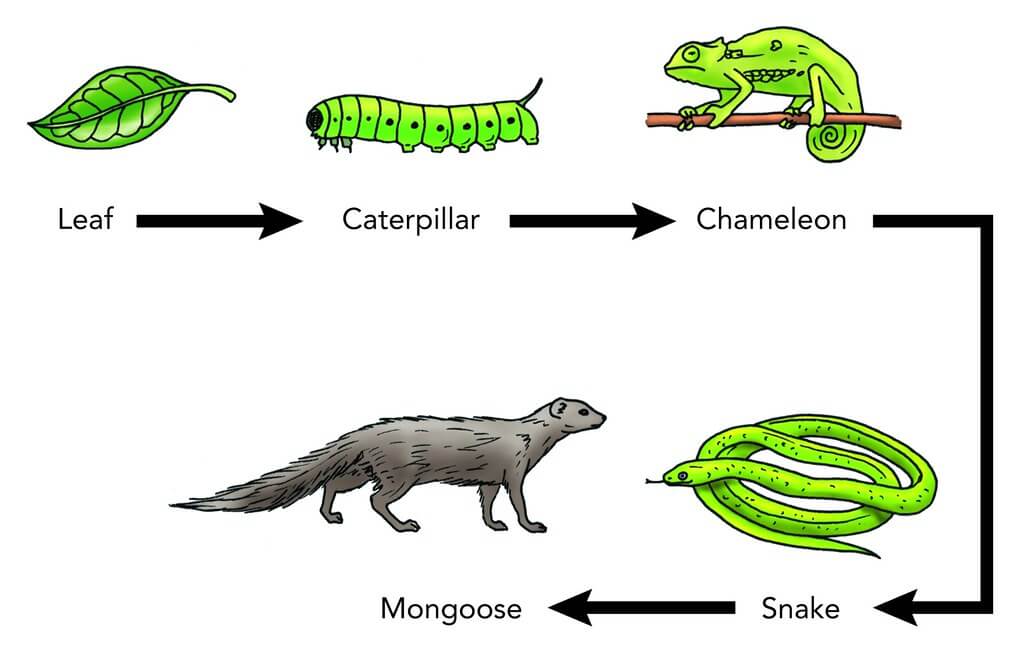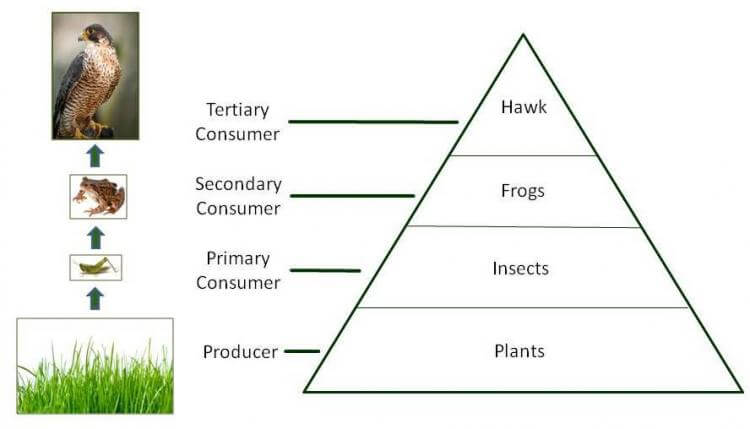The Ultimate Guide to Food Chains & Food Webs for Kids

Where Does All Energy Come From?
Imagine you’re playing outside, running, jumping, and laughing. Did you know you’re using energy just like every other living thing on Earth?
But where does that energy come from?
It all starts with the sun! 🌞
The sun sends its light to plants, and they use a magical process called photosynthesis to turn sunlight into food (energy!). Then, when an animal eats the plant, and another animal eats that animal… the energy keeps moving!
This journey of energy from one living thing to another is called energy flow.
So next time someone asks:
You can proudly say: 👉 “The Sun!”
What are Producers?
Meet the Energy Makers—The Producers!
Let’s play a quick game… Imagine if you could make your lunch all by yourself—using only sunlight! No shopping, no cooking, just sun + air + a little water = food! Sounds like magic, right? Well… plants can actually do that!What Are Producers?
Producers are living things that make their own food to get energy. They don’t need to eat other plants or animals—they’re totally independent!How Do They Do It?
Plants use a special process called photosynthesis (say it with us: foh-toh-SIN-thuh-sis). They take in:- Sunlight
- Water
- Carbon dioxide from the air
Who Are the Producers?
- Plants (like grass, trees, flowers)
- Algae (tiny green stuff in water)
- Some bacteria (tiny creatures you can’t even see!)
- “Auto” means “self.”
- “Troph” means “feed/nourish.”
What are Consumers?
Who Are the Consumers?
Imagine this: A rabbit munches on some grass. Then a fox sneaks up and chases the rabbit. That’s energy on the move, and it’s all thanks to something called consumers!Types of Consumers (Let’s Break It Down!)
| Type | What They Eat | Example |
|---|---|---|
| 🐮 Herbivores | Only plants | Cows, deer, rabbits |
| 🦁 Carnivores | Only other animals | Lions, eagles, sharks |
| 🐻 Omnivores | Both plants and animals | Bears, humans, raccoons |
| 🍄 Decomposers | Break down dead plants & animals | Mushrooms, worms, bacteria |
- Hetero = others
- Troph = feed or nourish
What If There Were No Decomposers?
Why Are Decomposers So Important?
- Decomposers (like fungi, worms, and bacteria) have a BIG job: They break down dead plants and animals and turn them into nutrients that go back into the soil.
- Then plants use those nutrients to grow strong and healthy!
- It’s like nature’s recycling crew—cleaning up and giving back!
What Happens Without Them?
Without decomposers:- Dead things wouldn’t break down—they’d pile up everywhere!
- Soil wouldn’t get nutrients, so plants couldn’t grow well.
- Germs and waste would build up, making animals and people sick.
What are Chemotrophs?
Chemotrophs (say it with us: kee-mo-trohfs) are special organisms that get their energy from chemicals—not the sun! That’s right—they don’t need sunlight at all!
They use things like
- Hydrogen sulfide (the smelly gas near volcanoes!)
- Ammonia
- Iron and other minerals
They “eat” chemicals and turn them into energy to survive—kind of like tiny science-powered machines!
What is a Food Chain?
A food chain shows how energy and nutrients travel from one living thing to another—kind of like passing the baton in a relay race, but with food!
And guess who starts it all?
The Sun! It gives energy to plants, and from there… the eating begins!
Step 1: The Producer (aka Nature’s Chef!)
Plants are the producers because they make their own food using sunlight through a process called photosynthesis. They don’t eat anyone—they just grow, glow, and get things going!
Learn how plants create energy in our Photosynthesis for Kids lesson.
Step 2: The Primary Consumer
Next in line is the primary consumer—the plant-eaters!
These are usually herbivores like rabbits, deer, or caterpillars.
They munch on producers (plants) to get energy.

Step 3: The Secondary Consumer
Now comes a meat-eater—the secondary consumer!
These animals eat the plant-eaters. Think snakes, frogs, or small foxes. They’re usually carnivores (meat-eaters) or sometimes omnivores (plant and meat eaters).
Step 4: The Tertiary Consumer
Hungry for more? Tertiary consumers eat secondary consumers! They’re the bigger hunters, like owls, big fish, or wild cats. They’re sometimes called top-level predators—but wait! There’s one moreStep 5: The Apex Consumer (The Boss!)
At the very top of the food chain is the apex consumer—the ultimate predator with no natural enemies!
They might be:
- Sharks in the ocean
- Hawks in the sky
- Tigers on land
Not all food chains include apex consumers, but when they do, they rule the top!
Quick Recap: Who’s Who in the Food Chain?
| Role | Who Eats What | Example |
|---|---|---|
| Producer | Makes its own food using the sun | Plant, algae |
| Primary Consumer | Eats the producer (usually herbivore) | Rabbit, cow |
| Secondary Consumer | Eats the primary consumer (carnivore) | Snake, frog |
| Tertiary Consumer | Eats primary & secondary consumers | Owl, big fish |
| Apex Consumer | Top predator – no one eats them! | Tiger, shark |
In the following food chain diagram, the arrows show the transfer of energy from one organism to the next organism.

In the food chain diagram, If any organism ends with this chain, then all animals will be affected.

What is the Food Web?
Have you ever heard the phrase “everything is connected”? That’s exactly what a food web shows us!
A food web is like a giant map of who eats whom in an ecosystem—with lots of food chains all linked together!
Unlike a single straight line (like a food chain), the food web looks more like a spider web—with many crisscrossing paths.
Example:
- The rabbit eats grass
- The snake eats the rabbit
- The hawk eats the snake
- BUT… the hawk might also eat a mouse, and the mouse might eat seeds, not grass!
That’s a food web! One animal can be part of many different food chains—and they’re all connected!

What is a Food Pyramid ?
A food pyramid (also called an energy pyramid) shows how energy moves through the food web. It looks like a triangle and tells us how much energy is passed from one level to the next.
Here’s how the food pyramid works:
- The bottom level is the producers (plants). They have the most energy because they get it directly from the sun.
- The next level is herbivores (plant-eaters).
- Then come carnivores (meat-eaters).
- At the very top is the apex predator (like an eagle or tiger).
But here’s the twist…
Only about 10% of the energy moves up each level!

Summary - What Did You Learn?
| 🧠 Concept | 📘 What You Learned | 🌟 Example / Tip |
|---|---|---|
| Food Chain | Shows one path of energy—who eats whom | Grass → Rabbit → Fox |
| Food Web | Many food chains linked together in an ecosystem | A rabbit is eaten by both a fox and an owl |
| Food Pyramid | Triangle diagram showing energy levels—energy decreases as you go up | Producers have most energy; apex predators have the least |
| Where is most energy? | At the producer level (plants), they get energy directly from the sun | Plants → herbivores → carnivores |
| 4 Main Parts of a Food Chain | 1. Sun 2. Producers 3. Consumers 4. Decomposers | Energy starts with the sun and ends with decomposers |
| What do arrows mean? | They show the direction of energy flow—from food to eater | Grass ➝ Rabbit ➝ Fox |
| Apex Predator | Top of the food chain—no one eats them | Shark, Hawk, Tiger |
| Herbivore Tip | “Herb” means plants | Cow, Rabbit |
| Carnivore Tip | “Carni” means meat | Lion, Snake |
| Omnivore Tip | “Omni” means everything | Humans, Bears |
| Producers (Autotrophs) | Make their own food using sunlight—don’t eat anything | Plants, algae |
| Consumers (Heterotrophs) | Eat other organisms to get energy | Herbivores, Carnivores, Omnivores |
| Decomposers | Break down dead plants/animals & return nutrients to soil | Fungi, Worms, Bacteria |
| Trophic Level | Position in a food chain (producer, consumer, decomposer) | Producers = 1st level, Apex = top |
| Primary Consumer | Eats producers (plants)—usually herbivores | Rabbit, Cow |
| Secondary Consumer | Eats primary consumers—usually carnivores | Snake, Fox |
| Tertiary Consumer | Eats both primary and secondary consumers | Owl, Big Fish |
| Apex Consumer | Top predator—eats tertiary consumers and has no predators | Shark, Tiger, Eagle |

